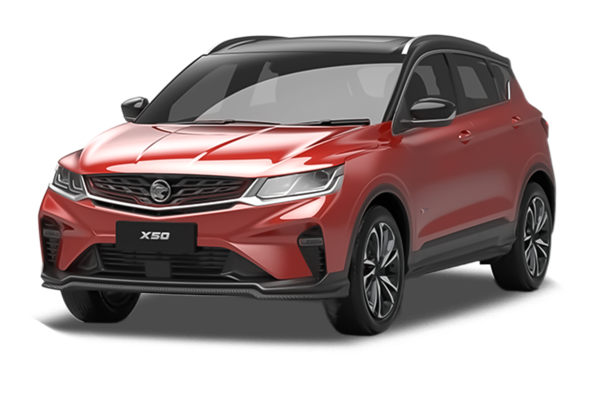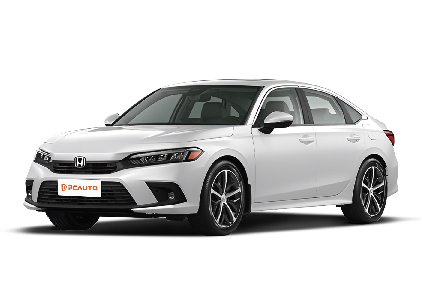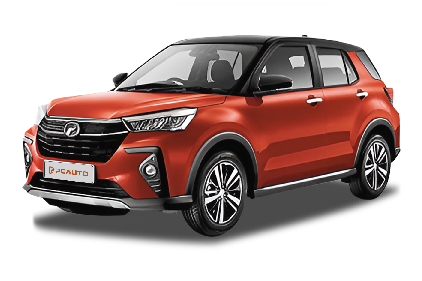Q
how to wash car
Special Disclaimer: This content is published by users and does not represent the views or position of PCauto.
Popular Models
Latest Q&A
Q
What's the size of Proton X50's battery?
The Proton X50 is equipped with a traditional 12V lead-acid battery. The battery has a capacity of 60Ah (with a cold-cranking amperage (CCA) of approximately 540A) and is maintenance-free. It is suitable for powering the vehicle's electronic system and starting motor. This battery specification is compatible with the factory-set 1.5T three-cylinder turbo engine and the intelligent start-stop system (if available). It is recommended to check or replace the battery every 2 - 3 years to avoid difficult starting or abnormal operation of electronic devices due to battery aging.
It should be noted that the Proton X50 is neither a hybrid nor an electric vehicle, so it doesn't have a high-voltage power battery pack. Its 12V battery is mainly used for low-voltage systems such as lighting, audio, and the ECU. If the vehicle is parked for a long time (more than two weeks), it is advisable to disconnect the negative terminal or use a battery charger for maintenance. When adding high-power audio or electronic devices, the battery's load capacity needs to be evaluated, and if necessary, upgrade to a higher specification (e.g., 70Ah). During regular maintenance, a voltmeter can be used for testing. Under normal conditions, the static voltage should be between 12.4V and 12.7V. If it is lower than 11.8V, the battery may need to be replaced promptly.
Q
What is the length of Proton X50?
The Proton X50 belongs to the B-segment vehicle category. The length of different versions of Proton X50 is 4330mm (for the 2024 and 2025 models), while the 2020 and 2023 models have a length of 4298mm. The length design of this car can well balance interior space and maneuverability. With a length of over 4 meters, it is flexible when driving on urban roads and convenient for parking. Meanwhile, Proton X50 also ensures relatively ample seating and storage space inside the car.
Q
When was Proton X50 released?
The release date of different versions of the Proton X50 vary. The 2020 and 2023 models of the Proton X50 are no longer on sale, which were launched in 2020 and 2023 respectively. The 2024 model entered the automotive market on June 4, 2024, and the 2025 model was launched on January 16, 2025. Currently, these two models are still available for purchase. As time goes by and technology develops, subsequent versions may see upgrades and improvements in terms of configuration, performance, and interior. For example, the 2024 facelifted X50 has addressed the issues of noise and vibration, and its interior has become more refined, offering consumers a better experience.
Q
When was Proton X50 launched?
The Proton X50 was officially launched in Malaysia on October 27, 2020, entering the market a quarter earlier than the manufacturer's initially announced release date of 2021 to meet strong local demand for B-segment SUVs. As Proton's first model built on Geely's BMA modular platform, its launch marked the brand's continued expansion of its SUV lineup following the Proton X70 (introduced in 2018).
Upon release, the Proton X50 offered four variants (Standard, Executive, Premium, and Flagship), powered by a 1.5L turbocharged three-cylinder engine (available in standard and higher-performance TGDI versions). The model enjoyed overwhelming initial demand, with orders surpassing 10,000 units within the first week, quickly establishing itself as one of the most popular SUVs in its segment at the time.
Over the years, Proton has introduced minor updates, such as refreshed infotainment systems and new color options, to maintain the model's market appeal.
Q
Is Proton X50 worth buying?
Whether the Proton X50 is worth buying can be considered from multiple aspects. It belongs to the B-class vehicle segment, and its exterior design meets popular aesthetics. In terms of power, it is equipped with a 1.5T turbocharged engine with a maximum horsepower of 150 or 177, which can meet the needs of daily driving and high-speed overtaking. The 7-speed dual-clutch transmission shifts quickly. Regarding fuel consumption, the official combined fuel consumption is approximately 6.4 - 6.5L/100km, which is quite economical.
The interior space of the car can meet the needs of family outings. The rear seats can be folded down to expand the cargo space. It is rich in safety features. Standard equipment includes ABS anti-lock braking, vehicle stability control, and multiple airbags. Some high - end models also come with driving assistance systems such as lane - change assist and autonomous emergency braking.
The interior focuses on practicality and comfort. It borrows the layout from the Geely Binyue, and is equipped with a 10.25 - inch screen. The GKUI voice control system makes the operation convenient. The 2024 minor facelift has also improved the noise and vibration issues, with more refined material selection and workmanship. The price ranges from RM 86,300 to RM 113,300, and different versions have different configurations. Overall, it has good cost - effectiveness and is a great choice for consumers with a limited budget who also pursue good configurations and performance.
View MoreLatest News

Meet the New BMW M5 G90: Rear-Wheel Steering & RM1.18M Price Tag
AshleyJun 16, 2025

Lotus Eletre Test Drive: Betrayal or Evolution of the Brand?
JamesJun 16, 2025

Beyond Expectations: All-New Audi Q3 Coming June 16
RobertJun 13, 2025

2025 Proton X50 Facelift: Major Upgrades & Possible 4-Cylinder Engine!
RobertJun 13, 2025

Perodua Ativa: Why Malaysia's Top Compact SUV?
MichaelJun 12, 2025
View More




 Cars
Cars





